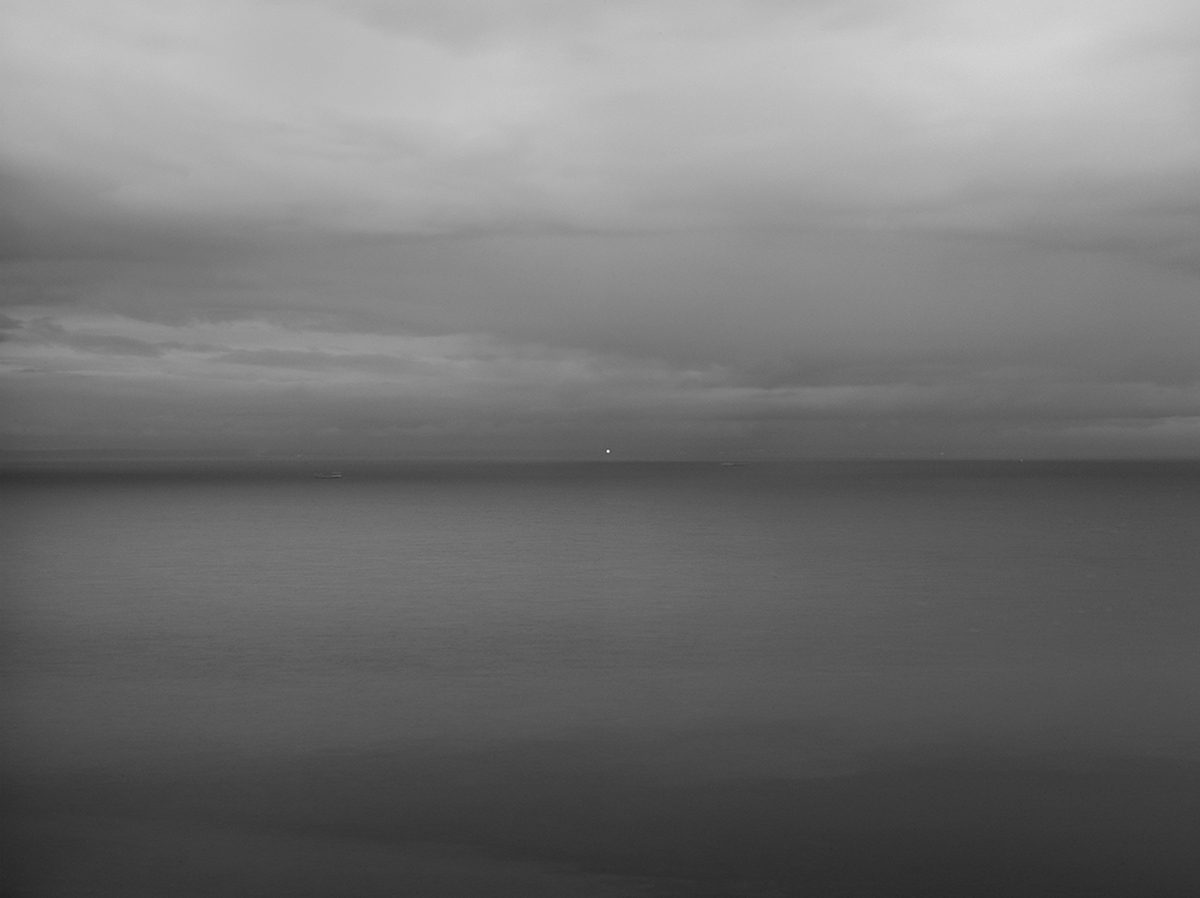“Well, we must wait for the future to show.” ― Virginia Woolf, To the Lighthouse
Much of Donovan Wylie’s practice has been concerned with exploring the post-conflict landscape in Northern Ireland. In 2004 he photographed the notorious Maze prison which during the Troubles housed, almost exclusively, those convicted of terrorist activities, many of whom sought the status of political prisoner. Wylie meticulously catalogued the structure of the prison embracing the camera’s aptitude as a tool of surveillance. Through repetition and seriality the series expressed the sense of oppression, control and fear that permeated both the prison itself as well as a land suffering some forty years of bitter conflict.
Three years later, Wylie completed British Watchtowers (2007) which documented the surveillance towers that existed along the border between Northern Ireland and the Republic – those bizarre yet normalised fortresses that signaled both the physical and the psychological division between countries. The Good Friday agreement brought about the demilitarisation of the border, so in a similar manner to the Maze, British Watchtowers sought to archive the architecture of conflict which was soon — at least physically — to be resigned to history.
The EU referendum of 2016 has propelled the subject of the Irish border back into public discourse. The fraught nature of reinstating a hard border between North and South cannot be overstated – an outcome which would threaten the stability of the entire Peace Process. From our current moment, Wylie’s watchtowers act as a sober reminder of a very recent past revealing in stark relief the high stakes of Britain leaving the EU for Ireland.
Made in the wake of the Brexit vote, and in collaboration with writer Chris Klatell, Wylie’s Lighthouse series returns to the subject of borders. The artist has photographed distant lighthouses from the opposing coastline – Scotland is seen from Northern Ireland, England from Scotland, Wales from England, France from Dover, and the Republic of Ireland from Wales. The resulting images are expansive, tenebrous seascapes punctuated by a small flicker of a far-off lighthouse. By photographing from a distance, Wylie presents the physical barrier created by the sea. This focus on the sea represents borders that exist today as well as alluding to borders that could come into existence in the future – a point of acute relevance considering recent Brexit suggestions that a border could be instated between Northern Ireland and the UK which cuts down the Irish sea.
The series brings to bear photographic lessons learned in Maze and Watchtowers. Both series employed a detached and objective vocabulary which took its cue from The New Topographics. The visual approach of the The New Topographics breathed new life into photography in post-conflict Northern Ireland. The style removed people from the picture frame and offered an alternative to the sensationalised portrayals of conflict that crystallised the image of Northern Ireland in the minds of many. It gave photographers the room to begin to construct a quieter, more nuanced image of Northern Ireland. For Wylie, The Bechers typologies of ‘anonymous sculptures’, industrial architecture such as water towers and blast furnaces, were a particular touchstone.
In Lighthouses Wylie draws upon the same methodical and systematic approach which sees the artist act less as photographer and more as operator. The process of locating the area of coast from which the lighthouse can be viewed requires detailed planning and mapping as well as a knowledge of the curvature of the earth and how light travels per nautical mile. The location and angle of view is precise and consistent. Working extremely fast, the images are made in the 20 minutes of intervening time between the lighthouse turning on at sunset, and before night falls.
These restricted shooting conditions result in a darkened palette and painterly effect which seems to reference landscape painting. Certainly the viewpoint, looking out on a vast and brooding seascape, calls to mind the work of 19th century Romantic painter Caspar David Friedrich. However, the main influence for this series is drawn from literature, specifically Virginia Woolf’s 1927 novel, To the Lighthouse. Woolf’s book explores the complexities of family and loss and so provides another lens with which to view the tensions between the UK and Europe as it goes through its separation process – a process which may in turn threaten the familial ties of the UK itself. Although Wylie’s series is tethered to these very specific questions borne out by Brexit, it also speaks more broadly to questions of identity and isolationism.
Each image is both a record of what is seen – the coast in the distance; and what is unseen – the place from which the image is shot. When shown together, the series telescopes several locations into one. This experiential push and pull as the viewer travels in their mind’s eye forward and backward from each coastline expresses a tension between sameness and difference to be found in a fractured world. “The images are like saying goodbye”, says Wylie. Yet because they oscillate between this sense of distance and proximity, the images are are not without hope. Although engulfed by a darkened sea and dwarfed by sheer distance, a light remains visible. And with it perhaps a glimmer of hope. While some may wish to retreat inwards widening the distance between us, there is a hope that a focus on proximity and the ties that bind us might still prevail.
Article by Sarah Allen, Assistant Curator at Tate Modern
For more from our Ideas Series, click here For information about Donovan Wylie's exhibition click here For tickets to Donovan Wylie's Desert Island Pics, click here
